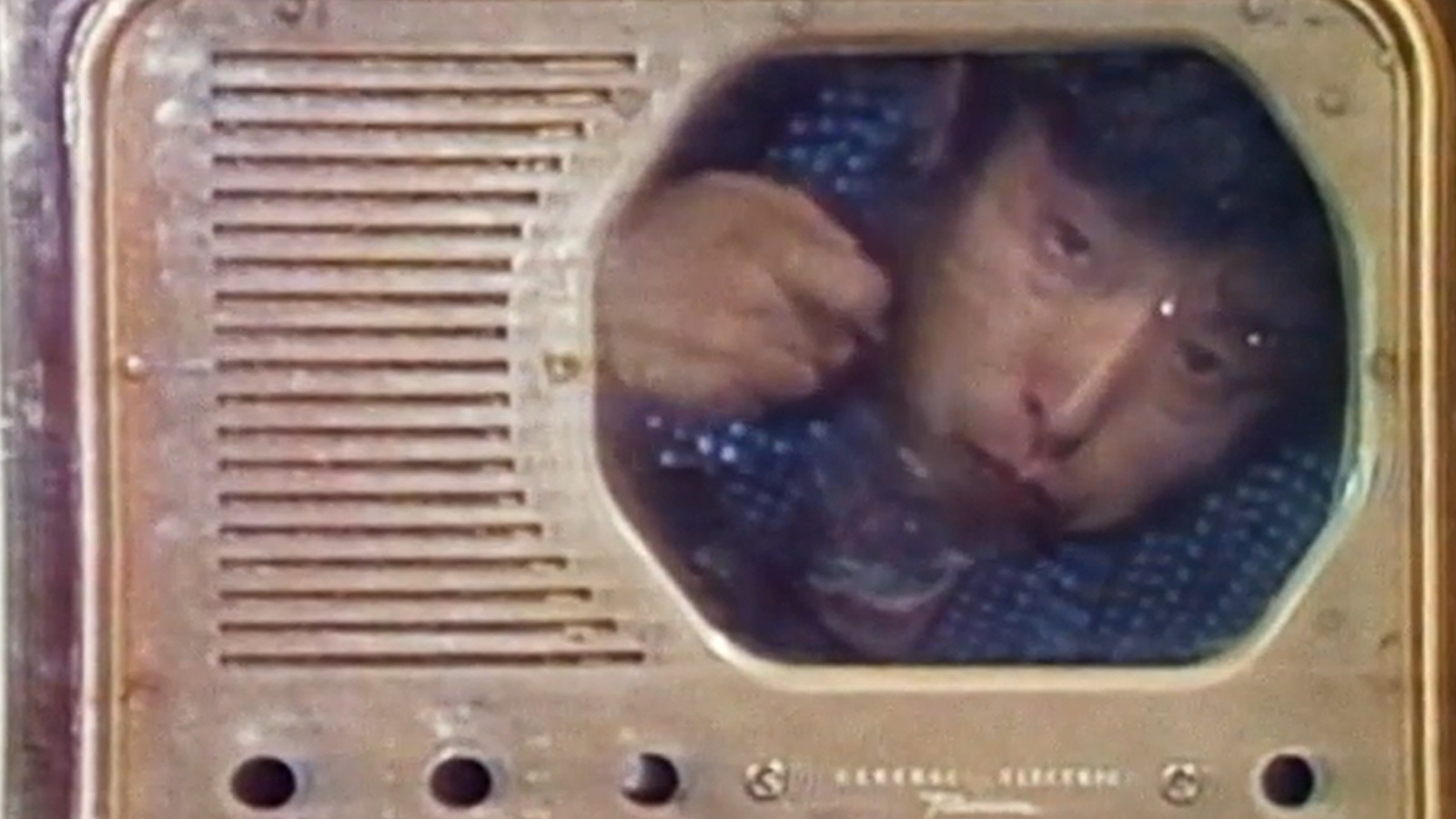The recent PBS documentary Nam June Paik: Moon is the Oldest TV, directed by Amanda Kim, recounts the seminal video artist’s rise to fame—first in Germany, where he was inspired by the work of John Cage, and later, New York, where he joined artists such as Yoko Ono, Al Hansen and Joseph Beuys as an active participant in the avant-garde movement Fluxus.
Paik arrived in the United States in 1964, a year of political upheaval that saw both the signing of the Civil Rights Act and the rapid acceleration of US involvement in the Vietnam War. While Kim’s documentary is quite conventional in structure and tone, the subject of Paik and his work is monumental, interesting, and uniquely relevant in modern digital culture; it’s impossible to tell the story of media today without telling the story of Nam June Paik.
Though the film covers the artist’s upbringing, his experiences in New York, his economic struggles, and the price he paid for his Communist convictions, it stops short of tying these threads together. To explain Korea’s political turmoil in the postwar period of his childhood, for example, there’s just a tepid allusion to East-West Germany. But Paik’s struggles, as a man and as an artist, were deeply informed by a decisive break with his wealthy family, and with the expectations of that family and the chaebol class to which it belonged. His principal aim—to deliver art from its lofty elite-funded conceptions and into the hands of the public—was both political, and intimately, painfully personal.

Paik’s first major TV exhibition, “Exposition of Music – Electronic Television,” took place at the Galerie Parnass in Wupertal, West Germany in 1963, sponsored by the architect and gallerist Rolf Jährling. Part of the installation featured sets of televisions attached by wires and cords to dials, which visitors could play around with to alter the pictures on the screens.
There’s a direct line between the idea of liberating the visual image on the television, bringing it into the hands of everyday people to manipulate and create something of their own, and the birth of YouTube. But in the event, liberation wasn’t that simple. Commercial power, and political power, have a near-boundless appetite for quashing such revelations as these.
In line with the ideological bent of much of the 60s avant-garde, the Fluxus movement rejected the commodification of art.
A nude cellist with small TVs attached to her breasts; a painting made by the artist crouching over paper with a paintbrush attached to her underwear; ‘orchestral compositions’ of violent and jarring sounds produced by unusual tools and instruments; such works led to political controversy as well as critical derision for the group. In fact, the backlashes were the point; the unfamiliar new forms, smashed and reworked, repudiated the recreation, validation and indeed the existence of conventional or even recognizable art making. In destroying things, and in playing around with noise, color, sound, shapes, and tools, these experimentalists were engaged not in tradition, but discovery. The movement was explicitly founded in order “TO PROMOTE A REVOLUTIONARY FLOOD AND TIDE IN ART, promote living art, promote anti-art,” as founder George Maciunas shouted in the 1963 Fluxus Manifesto.

The 1974 debut of TV Buddha—a sculpture of a Buddha sitting in front of a television set with a camera attached to it and thus, watching a live recording of itself—turned Nam June Paik into a national sensation, pulling him out of decades-long poverty. One might almost say that this, the most recognizable of his works, came to symbolize the first glimmering dawn of self-awareness in the digital era.
Internet art began as a revolutionary form that gave independent artists with few resources a platform to reach millions. In our own time, its near-total commodification reveals how Paik’s influence was crushed under the weight of encroaching commercialism, and how his ideas were corrupted by the tech sector. The promise of Paik’s “electronic super highways” (a phrase he coined in 1974), which he’d envisioned as a “springboard for new and surprising human endeavors,” was degraded by capitalism almost right away. Paik’s influence on social media self-branding can be read as a distorted and debased vision of the artist’s autonomy. What can “creative freedom” signify, if it’s tethered completely to an SEO-driven economy that devalues creators and creativity?
Paik recreated TV Buddha many times, with slightly altered materials and compositions. Through its proliferation, the image was transformed into kitsch: a meme before memes were a thing, and thus perhaps even more relevant today, as a reflection of the ways in which technology opens the avenues to self-discovery, but also self-absorption, self-promotion and a level of solipsism so deep it might not have occurred to Paik himself. Certainly he would have been horrified to see the devolution of mass communications into a nakedly destructive force in the clutches of big government and big tech.
But that Nam June Paik saw at least something of what was coming, there can be no doubt; when his health failed he noted ruefully, “The Buddha is punishing me for all I have been doing to him.”






